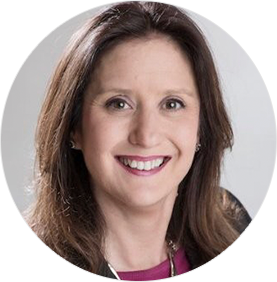Episode 99: Susan Savona on Aligning Your Sales Enablement Charter to Core Business Objectives
3.1K Views | 17 Min Read
Shawnna Sumaoang: Hi, and welcome to the Sales Enablement PRO podcast. I am Shawnna Sumaoang. Sales enablement is a constantly evolving space and we’re here to help professionals stay up to date on the latest trends and best practices so that they can be more effective in their jobs. Today, I’m excited to have Susan from Monster join us. Susan, I’d love for you to introduce yourself, your role, and your organization to our audience.
Susan Savona: Fantastic. Thank you so much Shawnna for the invite. My name is Susan Savona, I am currently the VP of global sales enablement at Monster Worldwide. Currently, I am managing a team of people across the globe who support our sales organizations and all things related to their knowledge, to systems, tools, coaching, things of that nature. With over 25 years of experience within enablement, development, operations, leadership, and coaching, this role really allows me to use all of that great information in order to help our sales organization be most successful.
SSu: Well, I’m really excited to have you join us today, and you and I have known each other for a few years now, in fact, you spoke at our Sales Enablement Soirée event when we were still doing things in person in Boston last year. You actually spoke about the importance of carefully choosing where sales enablement dedicates its time and its efforts and doing so by establishing a sales enablement charter. Now, to dig into that, how do you determine what initiatives will be the most beneficial for sales enablement to take on within an organization?
SSa: Oh, Shawnna that such a great question. Because sales enablement, I really believe, is a way to bridge a gap and look at product and marketing and sales and other areas of the organization, it’s very important from my perspective that we really look at the initiatives for the most benefit for our sales organization. So, I use a phrase all the time with my team and with my people, which is what is the business issue that we’re trying to solve?
Let’s really think about business impacts to make sure that we are focusing our time and energy in the right areas. It’s very important to look at things like, what are the goals of the company at a macro level? Are there any new tools or processes that are going to be required for sales in the coming year?
Understanding what the key goals of an organization are. What is the sales organization looking to do again? What is product going to be doing as well? Are there new products that are coming to market? Are there large updates that are happening as well?
So for us and for me and for the team, it’s really, really important to understand what are those key corporate initiatives and areas of focus so that we, from an enablement perspective, can help ensure that we are building the right programs to effectively enable the sales organization to execute on those goals.
SSu: Absolutely, and in that explanation, you mentioned quite a few other departments. In what ways should cross-functional collaboration play a role when it comes to establishing your charter?
SSa: For me, I think cross-functional collaboration is the absolute key. Sales enablement, can’t do things completely on their own. We really need to understand what are those goals, as I said, and initiatives across sales, product, marketing, even HR, and other areas of the organization.
From my perspective, if you don’t have that cross-collaboration and really working with other groups, we’re missing the full story for sales, we’re missing the full explanation as to why we might be doing a particular program or what’s the benefit for our customers or making sure something as simple as the message that we want the sales organization to use with their customers is the same, has the same look and feel, the same content or similar content that marketing is using also.
So for me, I truly believe that that cross-collaboration is integral to the success of the enablement organization. As I said, I think it’s the hub. We really liaise very, very closely with all of the functions that support sales and we, as a sales enablement function are able to take all of the different things that all of the different groups are doing and making sure that we can tie that into the right program, the right story, the right enablement activities that we want the sales organization to do, in order for us to be successful as a company and to support our overall corporate goals.
SSu: Absolutely, and I think that that’s fantastic that you guys are looking left and right across the organization, but how about laterally? So when creating a charter, what are some of the ways that sales enablement can ensure that executive leaders are involved? Both in the process, as well as just bought-in generally?
SSa: Again, Shawnna, great, great questions. For me, again, it goes back to what are the business issues that we’re trying to solve, and what are the business issues that are important to them? For me– and I coach my team all the time as they’re managing different projects and programs– is make sure that you understand the language of that particular group. So whether that’s a return on investment or different product features and functionality or increasing productivity, things of that nature, ask the same questions internally that we’re expecting our sales organization to ask externally. I mean, if we think about it, we’re also kind of sellers from an internal perspective and we really need to make sure that we are having the right conversations with our stakeholders in order to make that the most impactful for the sales organizations.
I really believe also that if sales isn’t successful, and enablement I think plays a key role in that, then we’re not going to necessarily have parts of the other organization or the organization in general to really be able to thrive. I like to use this example, if product says, ‘Oh, we’ve got this wonderful new product that we’re going to market’, and, you know, marketing has all of the material and they’re ready to go, if we as an enablement function haven’t been a part of what are the business issues that we’re solving for our customer and what kinds of conversations do they need to have, what kind of material is available, then we won’t be able to properly position the product.
So even if it’s the best in the world, it might not work and have the business outcome that we would like because we haven’t properly enabled the sales organization to have the right conversations with the right material that will really help their customers and ultimately drive business.
SSu: Absolutely. Now, I want to click into this because you’ve now mentioned this a few times, the importance of aligning enablement initiatives with the big strategic goals of the business, but how can you ensure– and for those that in organizations where maybe they haven’t had to do this, or they haven’t had the opportunity yet– how can sales enablement practitioners ensure that their sales enablement initiatives and goals align with those big business objectives?
SSa: Again, great questions. I will say sometimes it’s really difficult. Sales enablement in general, sometimes it can be really hard to quantify the business impact that we’re having.
So again, my statement or my broken record statement of really understanding what the business objectives are, what is the business issue that we’re trying to solve? If we can really answer that question, then the goal would be to be able to tie a metric to that success, whether that’s an increase in particular types of activities, whether that’s an increase in revenue of a particular product.
Whatever that output happens to be, I think it’s really important that we think about what is the business issue, because if we can really align to that, then we can look to measure the types of outcomes that we’re looking to find.
The other thing too, is, I stress very much, to ask lots of questions. So many times– and I’ve been in the business for a long time– I’ve had many sales leaders through the years come to me and say, ‘Oh, well, my team just needs more training on, pick a subject. They just need to more training on Salesforce or a particular product or a particular solution’. But again, if you ask questions of, ‘Okay, well, what education might they need or what business issue are you’re trying to solve, or what is the impact that by not having this program is impacting the business’?
If you can start to ask more questions, you’ll get more information, because I’ve had many experiences where if you can really dig to understand what those objectives are, you can put together an appropriate program and really tie that back to a return on investment. Or I’ve also been in situations where it has nothing to do with a training or an enablement program, maybe it’s process change that needs to happen, a field needs to be updated or something like that. So, it doesn’t always have to have a big enablement program. We as enablement practitioners really need to understand what the business impact is so that we can put the right kind of measurements in place, and also really ask questions, really dig deeper and get to the why.
SSu: I love that and get to the why that is fantastic advice. Now, for those practitioners that, you know, maybe aren’t as experienced as you are, I’d love for them to understand how can they effectively demonstrate success to their key stakeholders, whether that’s cross-functionally or laterally up into their executive stakeholders?
SSa: Again, it’s really key that we’re creating programs that solve the appropriate business issues. So, maybe it’s that we need to increase time to sale, or looking at KPIs that need to be met or the number of users successfully completing an e-learning, or as I said earlier, maybe it’s just an increase of sales for a particular product.
I think the more quantitative we can get in terms of the ROI on a particular program, the easier it will be to tie that success back to the particular enablement activities that are happening. I always ask my team whenever we’re doing a particular program – I talk to key stakeholders as well – what will success look like to you once this initiative is done? And again, that really gets back to and articulates the business issue that we’re trying to solve. That allows us to be able to answer the question of how will we measure success.
As I said, sometimes it’s a difficult question to answer, but if we can tie it back to the business issues– so are we seeing an increase in particular steps? Are we seeing an increase in sales? Are we seeing an increase in KPIs or a decrease in a particular area? What are those business issues?– and whenever you’re putting together a program, for me, it’s extremely important to really outline the business objectives. So, at the end of this program, ‘You will be able to do A, B and C’, then the metrics and the demonstration of success are, have we seen the lever move on those A, B, and C?
SSu: Absolutely, I love that. Susan, thank you so much for joining us. I want to pivot just a little bit for our closing question, if you don’t mind, because you have been doing sales enablement, for some time and you’ve seen it evolve. So, how do you see the future of sales enablement? In what ways will the scope of sales enablement expand or change in the near term?
SSa: Oh, wow. What an amazing question, and something that I have certainly thought about, not only just in terms of the years that I have spent from an enablement perspective, but really more importantly, over the last six months, just given the state of our world right now. We’re seeing– and I think it’s going to be a trend moving forward– things like remote selling. So really trying to increase some of the sales skills that are going to be coming in with remote selling. I’m seeing a lot of changes happening within roles and responsibilities, meaning are there other types of rules that are supporting the sales organization?
So, things like customer success and even more types of roles, inside sales, outside sales, things of that nature. I think those types of scope and the types of education that are going to be needed for those roles are going to change. And I’m also thinking more and seeing more in places like AI and analytics. So how can we use some of that data from a sales perspective to help them? So, are there particular types of buying profiles that the sales organization might need to start looking at? How can we use some additional analytics to understand more about our customers, how we might need to talk with them, how we might need to sell with them?
Because again, what I’m seeing more is really all around a focus on that customer journey. What are the customers doing? What are they buying? How are they buying? I think that’s been one of the bigger changes that I’ve seen, that customers can get a lot of information on their own without sales really providing them with a lot of information.
So how do we then enable the sales organization, maybe to have different types of conversations with their customers? I’m doing a little bit more understanding about how they’re buying, where they’re buying, what they’re buying, as well as using some of that AI and analytics to really give a much more of an understanding of if a customer is looking for, you know, these types of products, they’ve got a greater propensity to do something different or add more products to it, things of that nature. I think those are some areas that I am seeing where enablement expands, and gets much more involved with those types of areas in the business in order to help the sales organization, which I think is still going to be our core function is to help the sales organization be more productive in terms of their knowledge, their skills, tools, things like that.
SSu: I love that. Thank you so much, Susan, for joining us today, I really enjoyed our conversation.
SSa: It was wonderful to be here. Again, thank you so much for inviting me and it was really, really a pleasure to speak with you.
SSu: To our audience, thanks for listening. For more insights, tips, and expertise from sales enablement leaders, visit salesenablement.pro. If there’s something you’d like to share or a topic you’d like to learn more about, please let us know. We’d love to hear from you.














